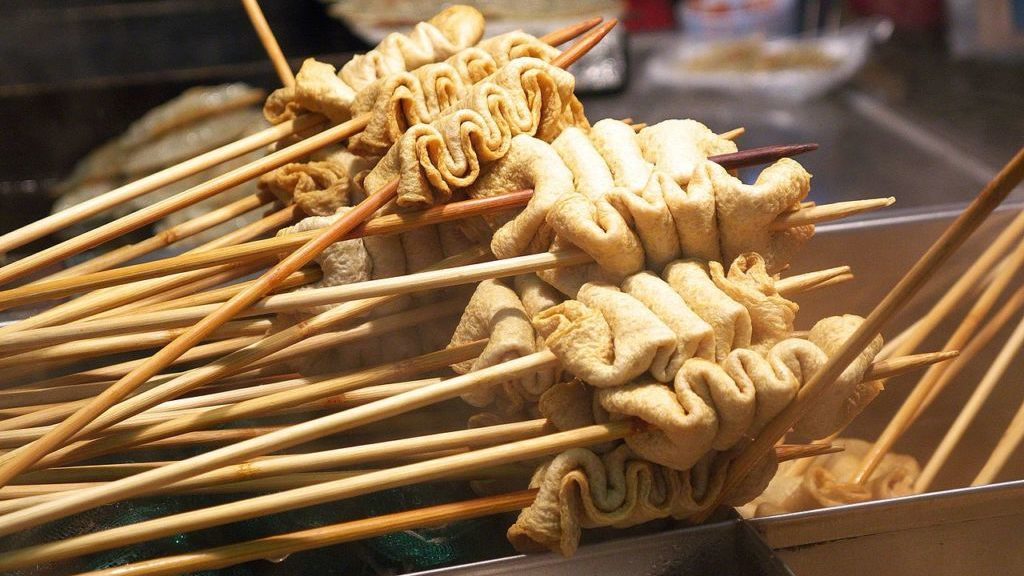Odeng (오뎅) sounds like Oden (おでん). In real life, Odeng (오뎅) is a word borrowed from the Japanese word, Oden (おでん). Nevertheless, in South Korea, Odeng is identical to the work Eomuk (어묵) which means fishcakes.
Fishcakes vary quite differently around the world, but one thing remains, which is the main ingredient of minced fish. Westerners described the fishcakes similar to the croquette.
Eomuk History; Why Odeng?
During the Japanese occupation from 1910 to 1945, Japanese fishcakes were introduced to Korea. The first-ever Korean eomuk processing plant, DongKwangFood in the Bupyeong Kkangtong Market was founded in the 1950s in Busan.
Park Jae-Deok learned of the eomuk processing techniques from the Japan-founded Samjin Fish Cake back in 1953. Samjin Fish Cake became the longest-standing eomuk distributor in Korea. After the Korean War, many refugees migrated to Busan, thus resulting in the booming eomuk industry.
Busan-eomuk which was commonly sold in food trucks in the early 1990s slowly became a trend. Busan-eomuk is referred to as the long sausage-shaped fishcakes that were sold.
These delicious yet hearty fishcakes are usually sold with hot broth at the food trucks, and inevitably, eomuk became one of the most popular fast foods in winter till today. Spot some eomuk food trucks even today in major Korean streets!
By 2010, eomuk has been given the recognition from a type of fast food to a recognised delicacy. While Samjin Fish Cakes remains the main dominator in the eomuk market, they finally established an eomuk bakery in December 2013.
Till this day, Samjin Fish Cake has the hearts of many as it can solidify their unique eomuk concept and image.
Composition of Eomuk
Fish cakes are mainly comprised of Corvina, cod, white fish or cuttlefish, which contains less fat. This is because some say that fatty fish are not suitable for making fishcakes. Salt, sugar, flour, and starch are necessary ingredients as well.
In some other countries, eggs and potatoes are added to the fish cakes too. Besides, other ingredients such as onions, green onions, carrots and cooking wine may be added in the making of fish eomuk.
Like it fried or soupy?
Fish cakes can be made by having the grounded fish paste deep-fried and cooled and refrigerated for future use.
It is a common sight to see eomuk being sold on food trucks. Moreover, eomuk can be boiled with other ingredients in a broth to make eomuk-tang (어묵탕; fishcake soup) or eomuk-jeongol (어묵전골; fishcake hot pot) which are popular options during cold, windy weather.
Eomuk-bokkeum (어묵볶음) is stir-fried fishcakes with vegetables and some other ingredients. Place the eomuk in a stew to make jjigae and in a Korean sushi-like roll to form the gimbap.
Do you like your eomuk fried or boiled? Food carts in Korea usually serve them both. A hot bar is a version of having eomuk deep-fried on a skewer. Vendors can make their “secret” recipe of sauces for fried eomuk with dippings such as sweet sauce, mayo, ketchup and mustard.
A boiled eomuk is usually served with hot spicy broth provided in paper cups. These fresh ways of eating bring eomuk to a whole new level.
Where to Find Eomuk or Odeng?
Try out some odeng for a snack or supper, browse these following restaurants that have odeng as part of their menus such as Myeongdong Topokki for odeng in broth and Ojju K-Food for eomuk-bokkeum. Find more of Korean food on foodpanda!
